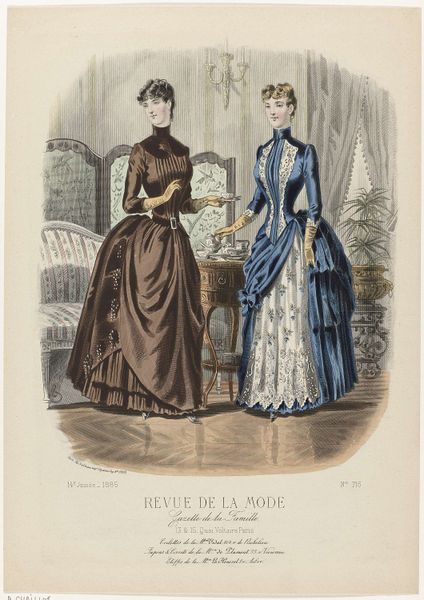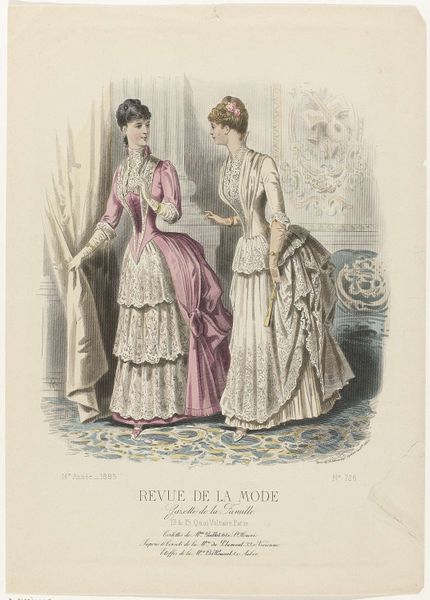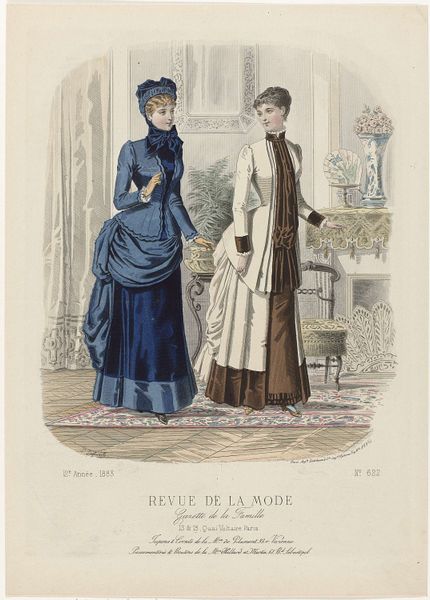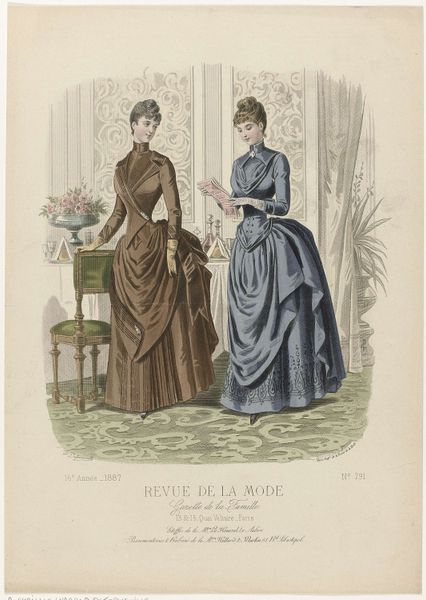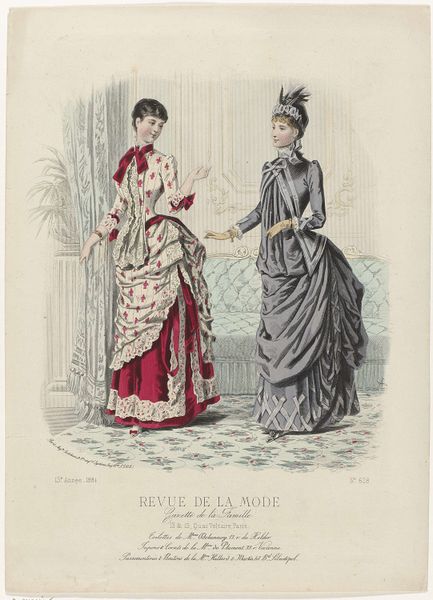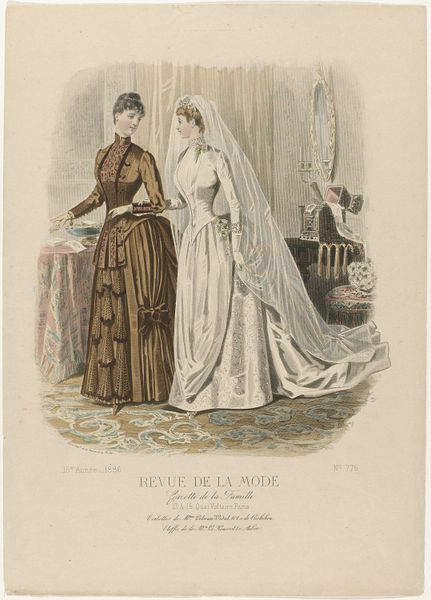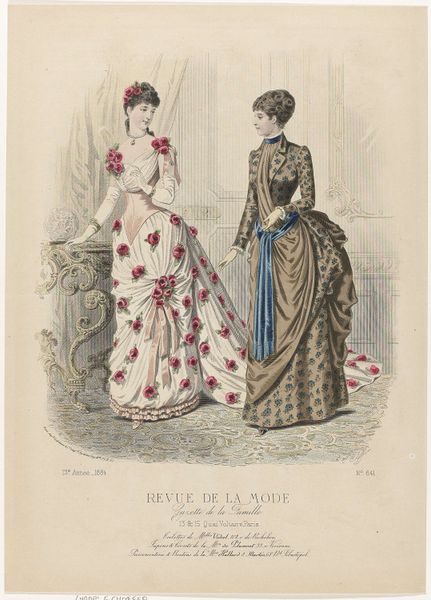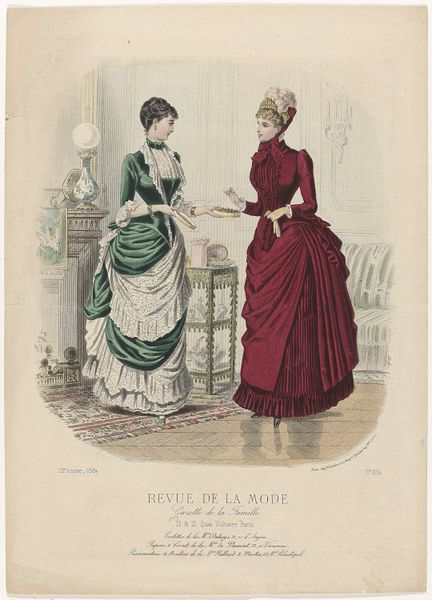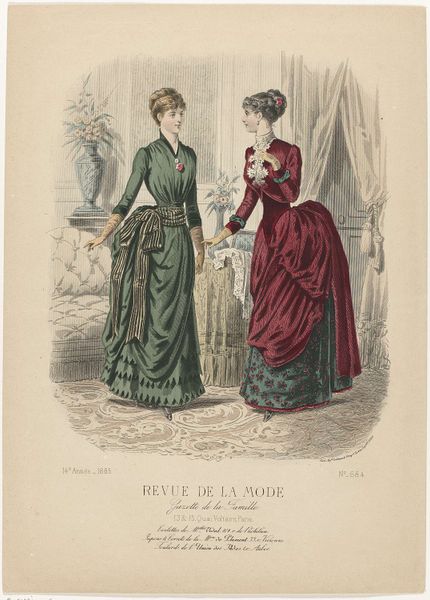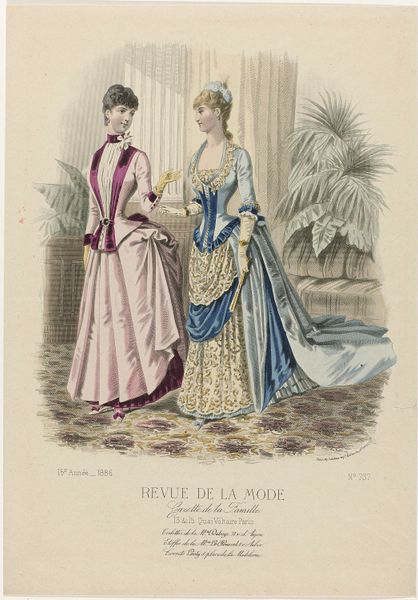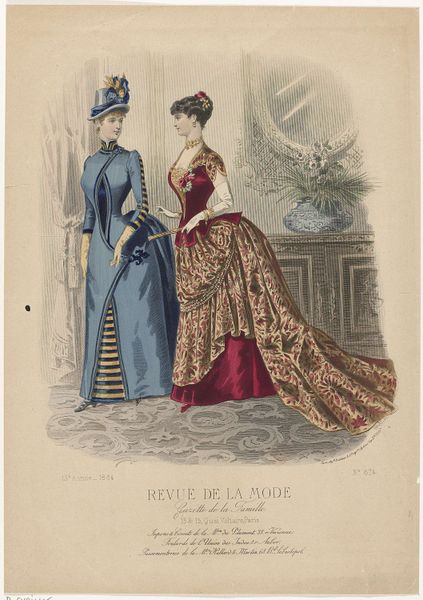
Revue de la Mode, Gazette de la Famille, dimanche 26 septembre 1886, 15e Année, No. 769: Toilettes de Mme Pelletier-Vidal (...) 1886
0:00
0:00
Dimensions: height 375 mm, width 268 mm
Copyright: Rijks Museum: Open Domain
Editor: This is an etching and print called *Revue de la Mode, Gazette de la Famille*, dating back to 1886, by A. Chaillot. I am immediately drawn to the detailed depiction of these elaborate dresses. How would you interpret this work? Curator: I see a rich record of material production. Look closely at the fabrics and forms replicated here via etching: the implied texture of lace, the drape of the striped fabric, the very distinct silhouette dictated by the bustle. It's an index of industrial output and fashionable consumption. Consider also the labour required to produce the textiles and garments, then reproduce them in print. Editor: That’s interesting! So, you are saying this is less about aesthetics and more about how things were made and consumed back then? Curator: Precisely. The etching isn't just documenting fashion; it's participating in a cycle of production and dissemination. This print functioned as a promotional tool, an advertisement circulating within a specific social sphere, didn’t it? It reflects an intricate dance between high art and the burgeoning world of consumer culture. Editor: I didn't think about the labour of the fashion industry in that light. This print is almost like a catalog of that industry. What does it say about the lives of these women, though? Curator: What's represented on their bodies is essentially an armor, performing their social position within strict boundaries, both literally through corsetry and figuratively, reinforcing social conventions. Think about how constrained their movement would be and the consumption required. Editor: I see. So, looking at it from a materialist point of view brings forth these issues about production and social power structures. Thank you. Curator: Absolutely, focusing on materiality opens us to discussing economic and social frameworks influencing fashion, art, and society in that era. A fresh outlook, don't you agree?
Comments
No comments
Be the first to comment and join the conversation on the ultimate creative platform.
